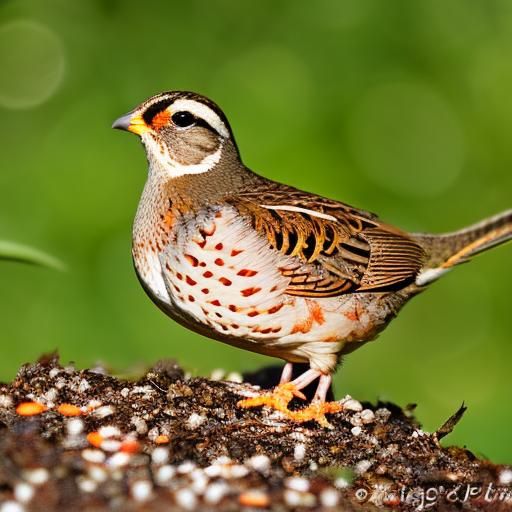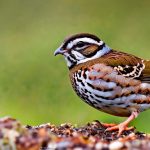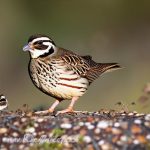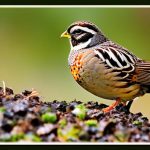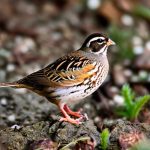Quails are small, ground-dwelling birds that are known for their social behavior and tendency to form large coveys. They are primarily active during the day and are known to forage for food in open areas, such as grasslands, agricultural fields, and open woodlands. Quails are also known to be attracted to areas with dense vegetation and shrubbery, as these provide cover and protection from predators. Understanding the behavior of quails is essential in developing effective strategies for deterring them from unwanted areas.
Quails are social birds that prefer to stay in groups, known as coveys, for safety and companionship. They are also known to be ground-nesting birds, which means they prefer to build their nests on the ground, often in areas with dense vegetation. Additionally, quails are attracted to areas with easy access to food and water sources. By understanding these behaviors, it becomes easier to identify the areas that are most attractive to quails and develop strategies to deter them from these locations.
Key Takeaways
- Quail are ground-dwelling birds that are attracted to open areas with low vegetation and easy access to food and water.
- Physical barriers such as fences, netting, and covers can effectively prevent quail from entering specific areas.
- Natural deterrents like predator urine, spicy sprays, and reflective objects can discourage quail from frequenting certain locations.
- Scare tactics such as loud noises, motion-activated devices, and decoys can startle quail and drive them away.
- Removing food sources, water, and shelter can make an area less attractive to quail.
- Planting dense shrubs, using motion-activated sprinklers, and creating noise can encourage quail to stay away from specific areas.
- If quail infestation persists, seeking professional help from wildlife control experts or pest management professionals is recommended.
Creating Physical Barriers
One effective way to deter quails from unwanted areas is by creating physical barriers that prevent them from accessing those areas. This can be achieved by installing fencing or netting around the perimeter of the area to be protected. The fencing should be at least 2 feet high and buried at least 6 inches into the ground to prevent quails from burrowing underneath it. Additionally, the fencing should have small enough gaps to prevent quails from squeezing through.
Another physical barrier that can be used to deter quails is the installation of bird spikes or bird netting on flat surfaces such as ledges, roofs, and windowsills. These barriers make it difficult for quails to land and roost in these areas, effectively deterring them from staying in the vicinity. By creating physical barriers, it becomes more challenging for quails to access and nest in unwanted areas, ultimately encouraging them to seek alternative locations.
Using Natural Deterrents
In addition to physical barriers, natural deterrents can also be used to discourage quails from frequenting unwanted areas. One effective natural deterrent is the use of predator urine or predator decoys. The scent of predator urine, such as that of foxes or coyotes, can create a sense of danger for quails, causing them to avoid the area. Similarly, predator decoys, such as owl or hawk statues, can create the illusion of a threat, deterring quails from staying in the vicinity.
Another natural deterrent that can be used to discourage quails is the use of strong scents and flavors that are unpleasant to them. This can be achieved by planting aromatic herbs and flowers, such as lavender, rosemary, or marigold, around the perimeter of the area to be protected. These scents can act as a natural repellent for quails, making the area less attractive to them. By using natural deterrents, it becomes possible to discourage quails from frequenting unwanted areas without causing them harm.
Implementing Scare Tactics
Scare tactics can also be effective in deterring quails from unwanted areas. One common scare tactic is the use of noise-making devices, such as ultrasonic repellers or motion-activated alarms. These devices emit high-frequency sounds that are unpleasant to quails, causing them to avoid the area. Additionally, motion-activated alarms can startle quails with sudden loud noises, creating a sense of danger and encouraging them to leave the vicinity.
Another scare tactic that can be used to deter quails is the use of visual deterrents, such as reflective tape or shiny objects. These items create flashes of light and movement that can startle quails and make them feel uneasy in the area. Additionally, hanging scare balloons or flags with eye-like patterns can create the illusion of a predator, further deterring quails from staying in the vicinity. By implementing scare tactics, it becomes possible to create a sense of danger for quails, encouraging them to seek alternative locations.
Removing Attractive Features
One effective strategy for deterring quails from unwanted areas is by removing the features that make the area attractive to them. This can be achieved by reducing the availability of food and water sources in the vicinity. For example, removing bird feeders and keeping pet food indoors can help reduce the availability of food for quails. Additionally, fixing leaky faucets and removing standing water can help reduce the availability of water sources for quails.
Another way to remove attractive features for quails is by clearing dense vegetation and shrubbery in the area. Quails are attracted to areas with dense cover and protection from predators, so by clearing these areas, it becomes less appealing for them to stay in the vicinity. Additionally, keeping grass and vegetation trimmed can make it more difficult for quails to find suitable nesting sites, further discouraging them from staying in unwanted areas.
Encouraging Quail to Stay Away
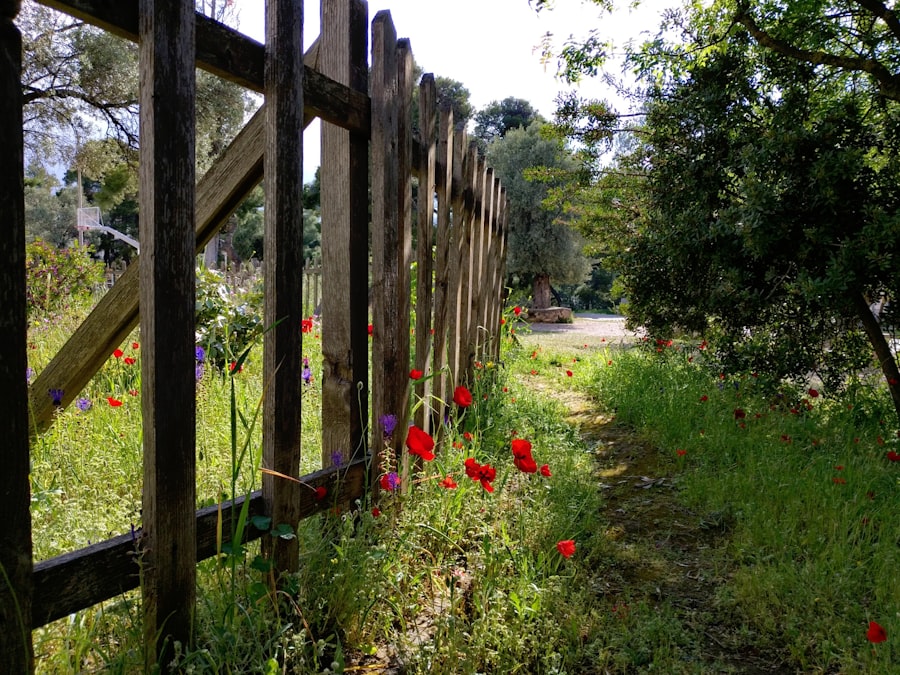
In addition to deterring quails from unwanted areas, it is also important to encourage them to seek alternative locations where they are welcome. This can be achieved by creating suitable habitats for quails in nearby areas where they are not considered a nuisance. For example, planting native grasses and wildflowers in designated areas can provide suitable habitat for quails while keeping them away from unwanted locations.
Another way to encourage quails to stay away is by providing alternative food and water sources in nearby areas. This can be achieved by installing bird feeders and birdbaths in designated locations where quails are welcome. By providing suitable habitats and resources in alternative locations, it becomes possible to encourage quails to seek refuge in areas where they are not considered a nuisance.
Seeking Professional Help
If all else fails, seeking professional help may be necessary to effectively deter quails from unwanted areas. Pest control professionals can provide expert advice and assistance in developing effective strategies for deterring quails. They may also offer humane trapping and relocation services for quails that are causing a nuisance.
Additionally, wildlife conservation organizations and local authorities may provide guidance on how to manage quail populations in a humane and responsible manner. By seeking professional help, it becomes possible to address quail-related issues effectively while ensuring the well-being of these birds.
In conclusion, understanding quail behavior is essential in developing effective strategies for deterring them from unwanted areas. By creating physical barriers, using natural deterrents, implementing scare tactics, removing attractive features, encouraging quail to stay away, and seeking professional help when necessary, it becomes possible to manage quail populations in a humane and responsible manner.
If you’re looking for ways to keep quail out of your garden, you may also be interested in learning how to convert a shed into a chicken coop. Check out this informative article on poultrywizard.com for tips and ideas on creating a comfortable and functional space for your feathered friends.
FAQs
What are some effective methods for keeping quail out of the garden?
Some effective methods for keeping quail out of the garden include using physical barriers such as fences or netting, using scare tactics such as decoys or noise makers, and planting deterrent plants that quail dislike.
What type of fencing is best for keeping quail out of the garden?
A small mesh wire fencing, such as chicken wire or hardware cloth, is best for keeping quail out of the garden. The fencing should be at least 3 feet high and buried a few inches into the ground to prevent quail from digging underneath.
What are some plants that can deter quail from entering the garden?
Plants such as marigolds, lavender, and rosemary are known to deter quail from entering the garden. These plants have strong scents that quail find unpleasant.
Are there any natural predators that can help keep quail out of the garden?
Natural predators such as cats, dogs, and birds of prey can help keep quail out of the garden. However, it’s important to consider the potential impact on other wildlife and pets before introducing predators to the garden.
Are there any non-lethal methods for keeping quail out of the garden?
Yes, there are several non-lethal methods for keeping quail out of the garden, including using scare tactics such as decoys or noise makers, and planting deterrent plants. These methods can be effective without causing harm to the quail.
Meet Walter, the feathered-friend fanatic of Florida! Nestled in the sunshine state, Walter struts through life with his feathered companions, clucking his way to happiness. With a coop that’s fancier than a five-star hotel, he’s the Don Juan of the chicken world. When he’s not teaching his hens to do the cha-cha, you’ll find him in a heated debate with his prized rooster, Sir Clucks-a-Lot. Walter’s poultry passion is no yolk; he’s the sunny-side-up guy you never knew you needed in your flock of friends!

